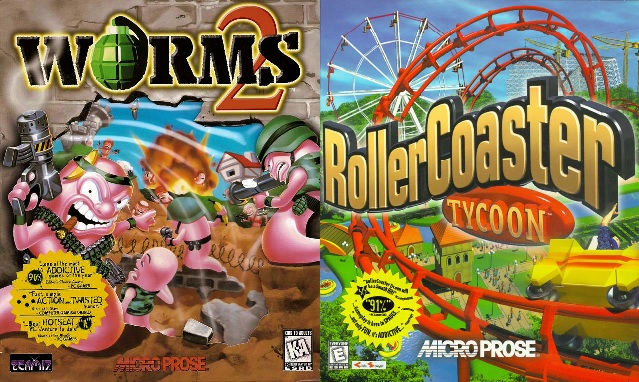MicroProse Before MicroProse: Morning in Simulation America
- baronsfel001
- Apr 3, 2021
- 5 min read

The chance encounter between a gifted computer programmer and Air Force pilot was the documented, but not actual, beginning. Such is the general rule of history that events lead to a culmination that makes the books, however the process of getting there is vital to the understanding of what made it happen. For these starting points there were 3 major players involved: Sid Meier and then-Major "Wild Bill" Stealey are the two that made MicroProse happen, but it would not have turned out as it did without a certain games and computer company called Atari.

In 1979 Atari, flush with the success of their arcade classics and VCS console (later known as the Atari 2600), entered the home computer market with an impressive lineup of 8-bit machines. While the computer market of the 70s and 80s was saturated relative to today, Atari was technically among the stronger competition for its time but also more costly. Starting models were the standard 800 and entry-level 400, both of which came with audiovisual capabilities that could outpace the Apple II and stood strong against the Commodore VIC-20. While not initially provided out-of-the-box, accessibility of the machines' power was aided by Atari BASIC.
Sid Meier, pre-MicroProse, developed such an early affinity for the Atari computers that he would quickly-advance from BASIC to assembly programming and use Atari 8-bit as his target platform all the way through the mid-1980s...well past its prime. But that is jumping ahead a ways. There is uncertainty as to what Meier's first game actually was but documentation in one provides evidence favoring the other.
The "About the Author" in the manual for Acorn Software Inc.'s Formula 1 Racing (which most likely lacked a Formula 1 license) says, besides Sid Meier at the time being "By day...a computer systems analyst, by night, a rock and roll keyboard player in a local band...", that he had been programming on the Atari for 2 years already as of 1982. This strongly-points to Hostage Rescue as the start of the legacy of Sid Meier on games to this day.
This is still circumstantial because although the setting of Hostage Rescue, an arcade shooter themed around the Iranian hostage crisis, is in 1980, there is no confirmation of the game being produced then nor that it ever saw any kind of commercial release. Hostage Rescue is exactly what would be expected of Sid Meier just starting out: simple premise with deeper gameplay than initially-appears while trying to branch out with at least one technical feat. The game loops indefinitely (which was standard arcade formula of the era), but the loops include day-night transitions and the objective is to bring hostages back to safety (before Choplifter set that standard) rather than merely shoot down the endless spawns of enemies. The game is fun for a little while and worth downloading to play on an emulator, but the gameplay is not that deep and starts getting old once its routines have been mastered. All it comes down to is:
1) avoid the missile fire; you can attack the mobile missile site but that makes it more aggressive
2) the white troops (which confusingly turn blue in low light) are friendlies to rescue
3) the blue troops (which change all kinds of colors in low light) are enemies; shoot but don't collide
4) pick up friendlies by colliding with them then take them to the left side of the screen
5) only hostages successfully-brought back home (left side of screen) are considered rescued
6) hostages are killed either by friendly fire (your own) or being in the helo when it gets shot down
7) there is no arcade-style point score, only a tracking of hostages rescued and hostages killed
That's it. There is clearly a long way to go to reach classic Sid Meier from Hostage Rescue, and playing the game today is less exploration of a hidden gem and more an interesting study of "so this is where it all began." Who knew at the time the accolades that would result from getting past this first point?

Which brings us to Sid Meier's first verified commercial game, the afore-mentioned Formula 1 Racing. It was published in 1982, the same year as MicroProse's founding (the encounter with Stealey had apparently not occurred yet). I am not a big fan of the racing genre thus cannot attest to how Formula 1 Racing stacks up to its contemporaries, what is certain is that, relative to Hostage Rescue, this was a huge leap forward in Meier's design progression. Picture is from another retro blog. The features and details are impressive and come as no surprise to those of us who played first generation MicroProse on Atari computers (or emulators in my case). Starting with the menu system, the range of options (even the font used) are a close match to the combat games that would follow. There are 5 tracks, 4 difficulty levels, choice of 1 to 10 laps, even a day-night option. Gameplay includes gear changes, track obstacles, semi-realistic collision effects, and immersive use of sound. Yet features that were possible and still omitted show how much farther there was to go. The Atari computers were designed for multiplayer: no one else at the time included 4 joystick ports by default in their systems, console or computer. Formula 1 Racing is single-player only, the 3 computer opponents being a constant. There is no kind of in-game tournament mode, just a return to the title screen to re-select options after every race. There is no cumulative point score, just tabulation of lap into total times for the individual race. The game is clearly not trying to be any kind of immersive simulation with a sense of progression, just another arcade racer among what was already quite a few at the time. While there is no harm downloading and emulating Formula 1 Racing, it cannot be said so easily whether it is a worthwhile experience beyond curiosity for the Meier connection. Perhaps, at worst, doing so is not much of a loss as the full experience will take up about the same time as any of the early 8-bit MicroProse games. When MicroProse began, Sid Meier would at first continue with the same technical tenets: exclusivity to Atari computers and use of Atari BASIC. Progress would occur in the realms of game design and genre diversification. While Sid Meier's transition from BASIC to assembly programming would unlock the technical leaps that defined his contribution to computer gaming, it was the growth of MicroProse as a company and its branching out in new directions that set it in the hall of fame for gaming pioneers. Atarimania entry for Hostage Rescue: http://www.atarimania.com/game-atari-400-800-xl-xe-hostage-rescue_2507.html Gameplay of Hostage Rescue (not my own): https://www.youtube.com/watch?v=EnGP4O6N7f4
Atarimania entry for Formula 1 Racing: http://www.atarimania.com/game-atari-400-800-xl-xe-formula-1-racing_6288.html
Gameplay of Formula 1 Racing (again, not my own): https://www.youtube.com/watch?v=0H5NhhmnwBU
Eric Kaltman, who acquired a copy of Formula 1 Racing, commented on its packaging in his blog entry: https://web.stanford.edu/group/htgg/cgi-bin/drupal/?q=node/237





Comments